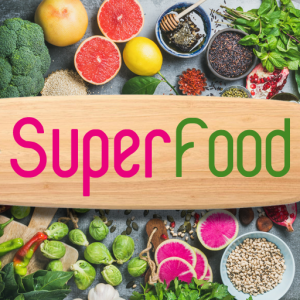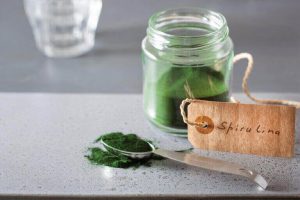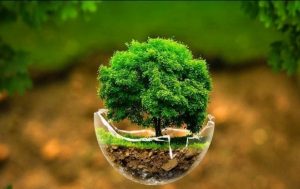Phycocyanin is a blue pigment that can be used as a natural color, replacing carcinogenic synthetic colors in food, medicine and cosmetics. Today, in addition to using it as a food color, it is used in a small amount in cytometry immunoassay. The phycocyanin present in spirulina is also useful for human health by having some functions such as antioxidant, anti-inflammatory and anti-cancer, for this reason, it has received more attention in recent years.
Due to the fact that phycocyanin occupies 20% of the total cellular protein of Spirulina platensis. Today, it has been chosen as a suitable model for commercial production of phycocyanin in phototrophic crops. The production of phycocyanin in the form of phototrophy is accompanied by problems. One way to reduce the problems is the production of heterotrophy, which is the production of recombinant protein, one of the ways of producing heterotrophy. Phycocyanin has two protein subunits, alpha and beta (β, α), where the alpha subunit has one site and the beta subunit has two sites to bind phycocyanobilin. to the mentioned apoprotein. The complete synthesis of phycobili protein depends on the simultaneous synthesis of alpha and beta chains and the correct placement of phycobilins in these two chains. Therefore, it is difficult to produce recombinant phycobili protein compared to other proteins.
Properties of phycocyanin

With the increase in global demand for food and due to the limitations of the agricultural sector, the development of algae cultivation and the production of valuable compounds from them have received special attention in recent years. Phycocyanin pigment (bright blue) with fluorescent and antioxidant properties is obtained from blue-green algae, especially Spirulina, and is widely used in different countries as a natural blue color.
Based on the purity percentage of this pigment, the products or biomass of this algae find many uses as food and medicinal supplements. Improving the production, extraction and purification of phycocyanin can increase its scope of application. Successful production of algae biomass with high phycocyanin depends on several factors including algae growth conditions, pigment accumulation ability, production technology and downstream process efficiency.
Nowadays, in the food industry, artificial food colors are widely used in the preparation of various types of juice, ice cream, biscuits and sweets. This category of additives, which are mostly used to attract customers, cover the undesirable color of the product and intensify the color or identity of the food, often have a chemical origin and can cause poisoning in the consumer in the long term. Of course, in the group of edible colors, there are also natural colors that have plant origin or similar natural colors that have the same formula as natural colors, but because chemical colors are more attractive and are cheaper and easier to prepare, they are used more. Although the use of approved chemical food colors in the short term does not have an adverse effect on people’s health; But excessive use of these additives at one time or continuous use in the long term can be dangerous for the consumer.
These colors often have a bad effect on the two detoxification systems of the body, such as the kidney and liver, more than other organs, and the severity of the effect is more severe in children, pregnant women, and the elderly than in other groups. These dyes are relatively toxic and some of them accumulate in body tissues and are less excreted. Therefore, with the passage of time, their amount increases and they become poisonous. Consumers’ concerns regarding the safety of chemical dyes have limited their use in the food and beverage industries and have increased the demand for the use of natural dyes in these industries.
Applications of phycocyanin:
Phycocyanin has anti-cancer activity, anti-inflammatory activity, immune system enhancing activity, liver and kidney protection medicinal effects. Therefore, phycocyanin is developed as a potential drug and has an important use and has become a hot topic in the field of pharmaceutical research. Phycocyanin is anti-cholesterol, antioxidant, anti-sediment, regeneration and detoxification agent.
Its properties are numerous and cross-organism, but it is mainly designed and used for its immune system strengthening properties. These are the properties that make phycocyanin extracted from spirulina algae and used as a supplement to help the immune system. Also, these features strengthen the cell membrane. Therefore, the protection of cells against external attacks increases. According to the tests, phycocyanin is about 6 to 7 thousand times more than spirulina and 20 times stronger than vitamin C. In case of fatigue, lack of iron and for recovery It is recommended to use it after intense physical activities.
It also prevents DNA strand breaks and promotes repair. It also strengthens the enzyme activity of the cell nucleus. It has a modulating effect on the body’s immune system. As a result, it reduces some excessive reactions and in case of weakness, it is irritating.
Some studies have shown that phycocyanin reduces the level of circulating glucose and reduces its consequences in the presence of excess sugar. It may have the potential to be an important nutritional supplement to get rid of various infectious diseases and It is also considered to be caused by oxidative stress.
Among the natural colors, blue color is less used in the food industry due to the limited plant sources of it, Ranasian and Vesme, and chemical colors such as Blue Brilliant are used more. According to the standard of the World Health Organization (WHO/FAO) and also the Food Additives Committee (JECFA, Food Additives on Committee Expert WHO/FAO Joint), the acceptable daily consumption of brilliant blue chemical dye, which is obtained based on animal and human experiments, is 12.5 milligrams per kilogram of body weight.
In recent years, the use of other natural resources such as microalgae has increased the demand for phycocyanin blue dye obtained from spirulina microalgae. At present, awareness of the harmful effects of industrial dyes and public interest in using natural products has caused microalgae to be considered as an important source for natural dyes and pigments. Since 2013, based on FDA decision as blue color
Natural has been considered in a large volume in the American food industry. This pigment is currently produced in a very limited way in the country. Rayaya Algab Pars is one of the limited producers that was able to extract phycocyanin pigment from spirulina algae.
Enhancement tablets are sold at the price of 1500 US dollars and the price of one very pure gram with analytical value is 2500 US dollars, and of course these prices are without calculating the cost of transportation to the country. It should be noted that each kilogram of phycocyanin imported from Hansen is sold for more than 50 million rials inside Iran. Estimates indicate that the volume of the global market for natural dyes including phycocyanin is about 250 million dollars, which is expected to increase within 5 years. The future will increase to 10 times.
Therapeutic properties of phycocyanin
Today, one of the most extensive studies for the treatment of cancer in connection with anticancer effects are cyanobacteria. Spirulina is a microscopic filamentous cyanobacterium that contains strong antioxidants and its health-promoting properties are related to its antioxidant pigments. Phycocyanin is a blue pigment in the form of a non-toxic biliprotein that is made from the combination of two alpha and beta subunits and has three forms: phycocyanin C (PC-C), phycocyanin R (PC-R) and allophycocyanin (APC). Phycocyanin has anti-inflammatory, anti-diabetic, antioxidant, free radical inhibition, antibacterial properties, and the most important of which is its anti-fungal and anti-cancer properties, which actually induces the death of cancer cells through changes in the active ratio of depolymerization of microtubules and microfilaments, as well as caspases 3 and 8 in the path of apoptosis, ornithine decarboxylase. . The conducted research shows changes in the stage that introduced phycocyanin as an inhibitor of cyclooxygenase 2 enzyme and an effective factor in apoptosis.
The present experimental research was conducted on 16 female C57BL/6 mice aged 6-8 weeks (Pasteur Institute, Iran). Animals were kept at appropriate temperature and humidity and had sufficient access to water and food. After one week of acclimatization to the animal cages of the Physiology Department and following the ethical principles of working with animals (Ethical Committee letter number 35292), the rats were randomly divided into two groups (each group, 8 rats). The first group was divided as the control group (which only received water and food) and the second group was divided as the group receiving phycocyanin with a dose of 40 mg/kg. These experiments and other such experiments are being planned and implemented in all parts of the world with huge budgets. So far, it can be said that one of the most dangerous types of skin cancer, which is called melanoma, is also resistant to common chemotherapy drugs, and therefore inhibition of angiogenesis is considered a major goal in the fight against this type of cancer. Phycocyanin is extracted as a metabolite. Spirulina is able to inhibit angiogenesis. Therefore, one of the most important properties of phycocyanin to date is the antiangiogenic effect of C. spirulina platensis phycocyanin on the F10-B16 melanoma cancer line in 6/C57BL mice.
One of the products of Roya Algae Pars is phycocyanin for the preparation of this unique product










